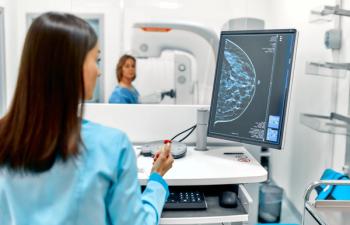
Study reveals drivers of breast cancer awareness and mammography compliance
Gynecologists and physicians, in concert with mothers, are key not only to a woman’s early awareness of both breast cancer and mammography but to awareness of breast cancer risk factors as well.
The most preferred and compelling source to motivate mammography compliance by women are their mothers, according to a survey commissioned by Hologic Inc.1
Gynecologists and physicians, in concert with mothers, are key not only to a woman’s early awareness of both breast cancer and mammography but to awareness of breast cancer risk factors as well.
“There is limited research on the earliest part of a woman’s journey in breast health,” said Marianne Doktor, president of MQD Consulting, a private marketing strategy and marketing research consultancy in Rochester, New York, who designed and conducted the study. “A woman’s decisions at this juncture can be critical for determining her breast health and potential quality of life.”
The study sought to better understand how women learn about breast health, “So others understand how to support that journey and help women achieve the best breast health outcomes possible,” Doktor told Contemporary OB/GYN®.
The 20-minute online survey of 913 US women, aged 25 to 54 years, was conducted by MQD Consulting’s research team in November 2021.
Although awareness starts at an early age, many women wish they had known about the benefits of mammography screening even younger.
Overall, 93% of survey respondents were aware of mammography, with an 86% awareness rate among those who had never personally had a mammogram. And regardless of age, roughly two-thirds recognize proper compliance means annual screening, “strong, but still a gap to 100%,” Doktor said.
The greatest percentage of women, 39%, listed the age range of 12 to 17 years as the age they first became aware of breast cancer, with the mean age for first awareness being 19 years.
A full 60-plus percent named 12 to 17 (30%) or 18 to 24 (31%) as the ages at which they desire/prefer to learn about mammography, “which is much younger than many of us would have thought,” Doktor said. “However, the explanation of why: ‘during the years my body is changing (puberty) or during the years I become independent and responsible for my own healthcare,’ makes the answer very intuitive.”
Moreover, the significant role of mothers in communicating the importance of mammography to young women was unexpected, according to Doktor. “Still, the young age at which a daughter desires the information is consistent with the strong guiding role a mother has or can have at that stage in her daughter’s life,” she said.
By physicians acclimating their young female patients to anticipate that mammography is a necessary and important component of their health and self-care, “will help these women be compliant when they are age-eligible,” Doktor said. “Both primary care providers and gynecologists can encourage the dialogue of patients with their own daughters because the study revealed such communication is welcome and preferred.”
The lack of awareness of risk factors for breast cancer “was also a bit startling, as was the inordinate emphasis on family history as a risk factor over most other and controllable variables,” Doktor said.
Physicians could dispel breast cancer risk misconceptions by including the topic during early education.
Despite a poor understanding of risk factors for breast cancer, “increased awareness of the risks may drive more screenings,” Doktor said. “Additionally, many age-eligible women do not know their personal risk for breast cancer or even their breast density.”
Encouraging patients to schedule a baseline mammogram for the purpose of learning their personal breast density “may be less daunting than getting one to see if you have cancer,” she said.
Meanwhile, Hologic is conducting further research to explore differences among Black and Hispanic women “to validate if our broad findings hold true for these two populations,” Doktor said. “Also, we will explore how to motivate screening within these groups, as they typically have lower mammography compliance.”
Reference
1. Hologic Inc. Understanding the patient “doorway” to mammography: a look into the sources of early breast cancer and mammography awareness. Published April 29, 2022. Accessed June 27, 2022. https://www.mygenius3d.com/knowledge-is-power/its-time-for-the-talk-on-breast-care-of-course/
Newsletter
Get the latest clinical updates, case studies, and expert commentary in obstetric and gynecologic care. Sign up now to stay informed.











